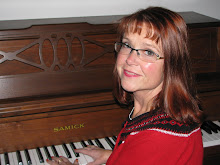Did you know that involvement in music and movement activities from an early age helps children develop good social and emotional skills as well? Social and emotional development has also been linked to school-readiness and even higher academic testing scores.
An easy way to blend music, movement, learning and fun for your child this summer is to enroll him or her into a Kindermusik summer camp. To find a class near you, click on kindermusik.com or give Kindermusik with Angie a call: 503-708-2827!
For a few ideas to incorporate music into your family’s activities, read the activities section below!
Babies 0 to 18 mos
Light and motion are incredibly important to your baby’s development. You can help your baby improve his or her visual literacy by encouraging his or her eyes to move. Spread out a blanket under a shade tree and lie on the blanket with your baby. Watch the motion of the tree branches as they sway in the breeze. Watch the clouds go by and sing a favorite song. It doesn’t matter if you’re a “good” singer or not, your baby will love the sound of your voice.
You might just find the perfect sing-along song on Kindermusik’s “Wiggle, Waggle, Loop-de-Loo” CD.
Toddlers 18 mos to 3 yrs
Ask your toddler what kinds of sounds different animals make, repeating the sounds with him or her. Get creative with your choices, what sound does a grumpy gorilla make? Then talk about comparisons: roaring lions versus chirping robins. If you have an older toddler, add an extra challenge by having him or her make the sound of an animal that is associated with their hiding place: buzzing like a bee if they’re by the flower bed or croaking like a frog if they hide under a bush.
The perfect song for this activity might just be found on Kindermusik’s “Frog Went A-Dancing” CD.
Big Kids 5 yrs & up
Go on a treasure hunt in your own backyard! Collecting things is a favorite preschool activity. Children in this age group are expanding their memory skills and the joy of finding a new or interesting item is particularly rewarding. Start out by deciding on a category that won’t be hard to find (leaves, rocks, etc.) or take along a notebook and you can write down the colors of the cars parked on the street. Once you have a goal, start your search! After you’ve done this a few times, come up with more specific and more challenging objects to seek. Below are a few additional ideas:
- Head outside and look for things that are purple, or polka-dotted or try to find smooth things, or bumpy objects.
- Play a music game. Try to fit songs into categories. Is it fast or slow? Loud or soft?
- Decorate an empty shoebox for your collection!
- If it’s too hot to go outside, give your preschooler a piece of paper with the name of a category on it. Have him or her draw pictures of items that fit into that category.
Find these CDs, songs, activities, and MORE at play.kindermusik.com
Join in the Fun this Summer!







